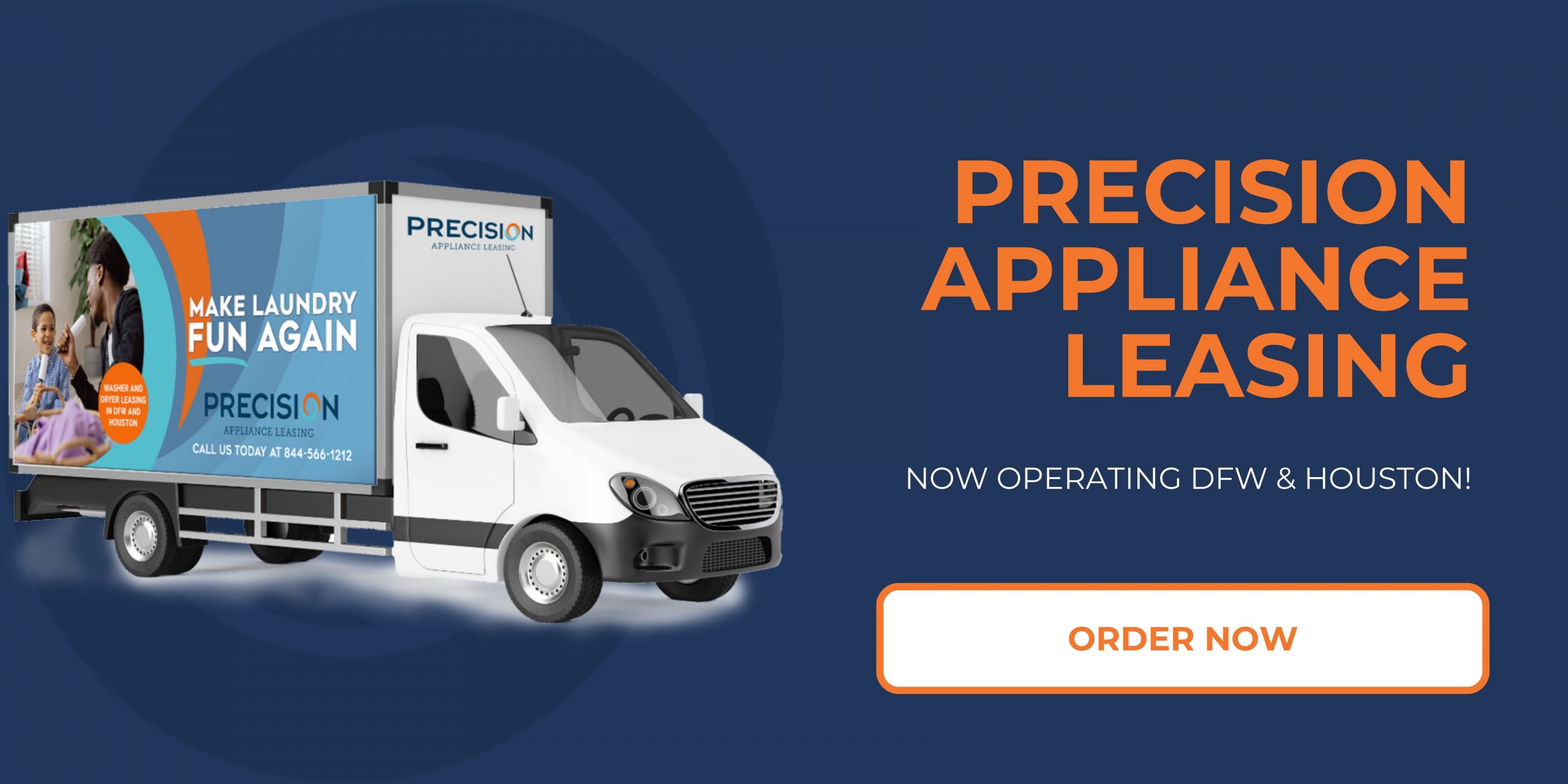Common Myths About Washer and Dryer Leasing—Debunked with Energy-Efficient Options
In recent years, the concept of leasing appliances, particularly washers and dryers, has gained traction among consumers seeking flexible and cost-effective solutions for their laundry needs. However, this shift has also given rise to a myriad of myths and misconceptions surrounding the practice. From the notion that leasing is always more expensive than buying to the belief that leased appliances lack efficiency, these myths can cloud the decision-making process for potential renters. As energy efficiency becomes increasingly important for consumers looking to reduce their carbon footprint and save on utility bills, understanding the realities of washer and dryer leasing is crucial.
Not only do energy-efficient models provide significant savings over time, but they are often available through leasing programs that emphasize sustainability. These programs frequently feature the latest technologies, ensuring that consumers can access high-performance, eco-friendly appliances without the burden of a hefty upfront investment. Debunking the common misconceptions about leasing these essential appliances can empower consumers to make informed choices that align with their financial goals and environmental values.
Moreover, as awareness of the benefits associated with leasing grows, so does the need for clarity regarding what consumers can expect in terms of service, maintenance, and overall value. It is essential to navigate these myths and highlight the myriad of opportunities that leasing presents, particularly when it comes to acquiring energy-efficient products. By casting aside the outdated misconceptions and embracing the truth about washer and dryer leasing, consumers can unlock the potential for a more sustainable and economical laundry experience.
Misconceptions About Upfront Costs of Leasing vs. Buying
When it comes to obtaining a washer and dryer, one of the most prevalent misconceptions is regarding the upfront costs associated with leasing versus buying. Many believe that leasing inherently incurs lower immediate expenses, while purchasing appliances means shelling out a substantial amount of cash upfront. In reality, both leasing and buying have their own associated costs that can vary significantly depending on the situation.
Leasing typically requires a lower initial payment compared to the significant upfront investment often needed for purchasing a new washer and dryer. However, this does not mean that leasing is always the more cost-efficient option in the long run. Many consumers overlook the cumulative costs of leasing over time, which may exceed the upfront costs of purchasing outright. Lease agreements can often include hidden fees, maintenance costs, and increased rates after the initial lease term ends, which can add up quickly.
Additionally, there is a common myth that buying a washer and dryer is unnecessary for anyone who may move frequently or has a fluctuating income. Leasing appears to be a more flexible and less financially burdensome option. However, many modern washers and dryers are designed to be energy-efficient, and their longer lifespan can compensate for the initial cost through savings on energy bills over time. Consumers should consider their individual circumstances, including their financial situation, how long they intend to use the appliances, and potential energy savings when deciding between leasing and purchasing.
When examining the myth around upfront costs, it’s also crucial to consider the availability of energy-efficient options. Many manufacturers now offer energy-efficient models that, while possibly more expensive upfront, provide savings on utility bills and often qualify for rebates. These savings can contribute to a lower total cost of ownership over time, thus recontextualizing the notion of what “affordable” actually means. Therefore, while upfront costs can influence immediate decisions, it is imperative for consumers to assess the totality of financial implications tied to both leasing and purchasing, including energy consumption and efficiency, to make an informed decision that aligns with both their budget and lifestyle.
Energy Consumption and Efficiency Comparisons
When discussing the topic of energy consumption and efficiency in relation to washer and dryer leasing, it’s important to understand the various factors that influence both the overall energy usage and the efficiency of these appliances. One common misconception is that leased appliances may be older models, which can lead to higher energy consumption compared to the latest energy-efficient units available for purchase. However, many leasing companies offer modern, energy-efficient models to attract environmentally-conscious renters. These units often carry the Energy Star label, which indicates they meet energy efficiency guidelines set by the U.S. Environmental Protection Agency.
Energy efficiency not only benefits the environment but can also lead to significant savings on utility bills. When individuals consider leasing, they might undervalue the potential cost savings associated with energy-efficient appliances. For example, a newer washer and dryer can use up to 50% less energy and water than models produced a decade ago. This efficiency can greatly reduce the household’s carbon footprint and also lead to lower monthly expenses, making leasing an attractive option for those mindful of both their finances and the environment.
Additionally, many leasing agreements include maintenance and service for these energy-efficient machines, ensuring that they operate optimally and continue to perform at high efficiency levels throughout the lease term. It’s crucial to clarify how compact and high-efficiency appliances compare when it comes to long-term energy consumption. Misleading beliefs often suggest that the costs of leasing outweigh the minor benefits in energy savings; however, modern leasing options increasingly focus on providing tenants with high-efficiency appliances that not only conserve energy but also boost the convenience of laundry tasks.
Moreover, as consumers become more aware of climate change and the importance of sustainable living, the demand for energy-efficient leasing options will inevitably increase. Debunking myths surrounding energy consumption when leasing versus buying empowers consumers to make informed decisions that align with both financial and environmental goals. In conclusion, considering energy efficiency in leasing agreements can mitigate costs down the line and contribute positively to sustainable living practices, making it a powerful option for those in the market for laundry appliances.
Maintenance Responsibilities in Leasing Agreements
When it comes to leasing appliances such as washers and dryers, one of the most significant aspects to consider is the maintenance responsibilities outlined in leasing agreements. Many individuals assume that because they do not own the machine, the leasing company is entirely responsible for all maintenance and repairs. This is a common myth that can lead to confusion and unexpected costs for the lessee.
In most leasing agreements, the leasing company may cover significant repairs or malfunctions within a specified warranty period. However, routine maintenance tasks often fall on the user. For example, cleaning lint traps, checking hoses for leaks, and maintaining proper ventilation may be expected of the lessee to ensure the appliance operates efficiently and safely. This generally requires a clear understanding of the terms laid out in the lease and what maintenance is covered. Prospective lessees should read the agreement thoroughly and ask questions about their obligations to avoid any surprises down the line.
Another important factor to consider is that leasing agreements for energy-efficient washers and dryers may include stipulations regarding maintenance that can also contribute to energy savings. Energy-efficient models often require specific maintenance practices to maintain their efficiency. Regular servicing, for instance, can ensure that machines continue to operate at peak performance, ultimately saving on utility costs. By keeping these responsibilities in mind, individuals can make informed decisions about leasing versus buying, while being aware of their ongoing commitments to appliance upkeep.
When addressing maintenance in leasing, it is also essential to differentiate between leasing and ownership. Owners of washers and dryers typically bear all repair costs, while lease agreements may provide more predictable expenses associated with maintenance. Debunking myths about these responsibilities can help potential lessees understand that a well-structured lease can actually mitigate maintenance worries while providing access to the latest, most energy-efficient models, ultimately benefiting their pocketbook and the environment.
Impact of Leasing on Long-term Financial Savings
Leasing appliances like washers and dryers has become a popular option for many households, yet the long-term financial impact can often lead to misunderstandings. People frequently assume that leasing appliances is more costly in the long run compared to owning them outright. However, this belief doesn’t take into account several aspects of leasing that can actually lead to financial benefits, especially when it comes to maintenance, extended warranties, and, importantly, energy efficiency.
Leasing a washer and dryer often comes with lower upfront costs compared to purchasing them. This initial financial relief can make leasing an attractive option for those who may not have the capital to invest in high-quality appliances at once. Furthermore, many leases include maintenance and repair services as part of the agreement, which can save consumers significant money over time. When an appliance malfunctions, leasing agreements typically cover repairs, relieving the financial burden of unexpected costs that can be associated with ownership.
Another financial advantage of leasing appliances is the potential for energy savings. Many leasing companies offer energy-efficient models, and as these appliances are often designed to consume less energy and water, the monthly utility bills can be substantially lower. When leasing energy-efficient washers and dryers, consumers might find that their long-term savings on utility costs can offset the monthly lease payment, making it a financially viable option. Thus, while the notion of leasing equates to long-term expense is prevalent, in many cases, it can lead to greater financial savings due to reduced utility bills and included maintenance.
Moreover, debunking myths about leasing is essential in understanding the financial implications. Consumers often think that leasing locks them into long-term payments without the ability to accumulate equity in the appliances. However, the reality is that the flexibility of lease agreements can often allow for upgrades to newer, more efficient models that further lower operational costs. This evolution in appliance technology means that consumers can take advantage of ongoing advancements without the hefty investment typically associated with purchasing new appliances. In essence, consumers might find that leasing provides them the opportunity to enjoy up-to-date, cost-effective options without enduring long-term financial strain.
Environmental Benefits of Energy-Efficient Leasing Options
Leasing energy-efficient washers and dryers offers significant environmental advantages, making it an appealing choice for eco-conscious consumers. One of the main benefits is the reduction of energy consumption. Energy-efficient appliances are designed to use less electricity and water compared to their standard counterparts. This means that when leasing these more efficient models, individuals not only lower their utility bills but also decrease their overall carbon footprint. As energy-efficient washers typically consume about 25-50% less energy and substantially less water, the impact on the environment is noteworthy.
Furthermore, leasing energy-efficient appliances allows individuals to keep up with advances in technology without the burden of long-term ownership. Energy-efficient technologies are continually evolving, and leasing provides access to the latest models that meet stringent efficiency standards. This is especially important as manufacturers innovate and improve designs to enhance energy savings. By leasing, consumers can ensure that they are utilizing the most efficient appliances available, which contributes to a collective effort in combatting climate change.
Additionally, many leasing agreements include recycling programs for older appliances, ensuring that outdated models are disposed of responsibly. This practice helps to reduce landfill waste and promotes a circular economy, where materials are reused and recycled rather than discarded. This further aligns with the environmental benefits of leasing, as the process encourages sustainable practices among both manufacturers and consumers.
While some might be apprehensive about the perceived drawbacks of leasing, understanding the environmental benefits can help dispel common myths. For instance, the belief that leasing is always more wasteful compared to purchasing outright is flawed. When leasing energy-efficient appliances, not only does the consumer gain immediate access to up-to-date technology, but they also contribute positively to environmental sustainability. By choosing leasing options for energy-efficient washers and dryers, individuals can actively participate in fostering a more eco-friendly future.


